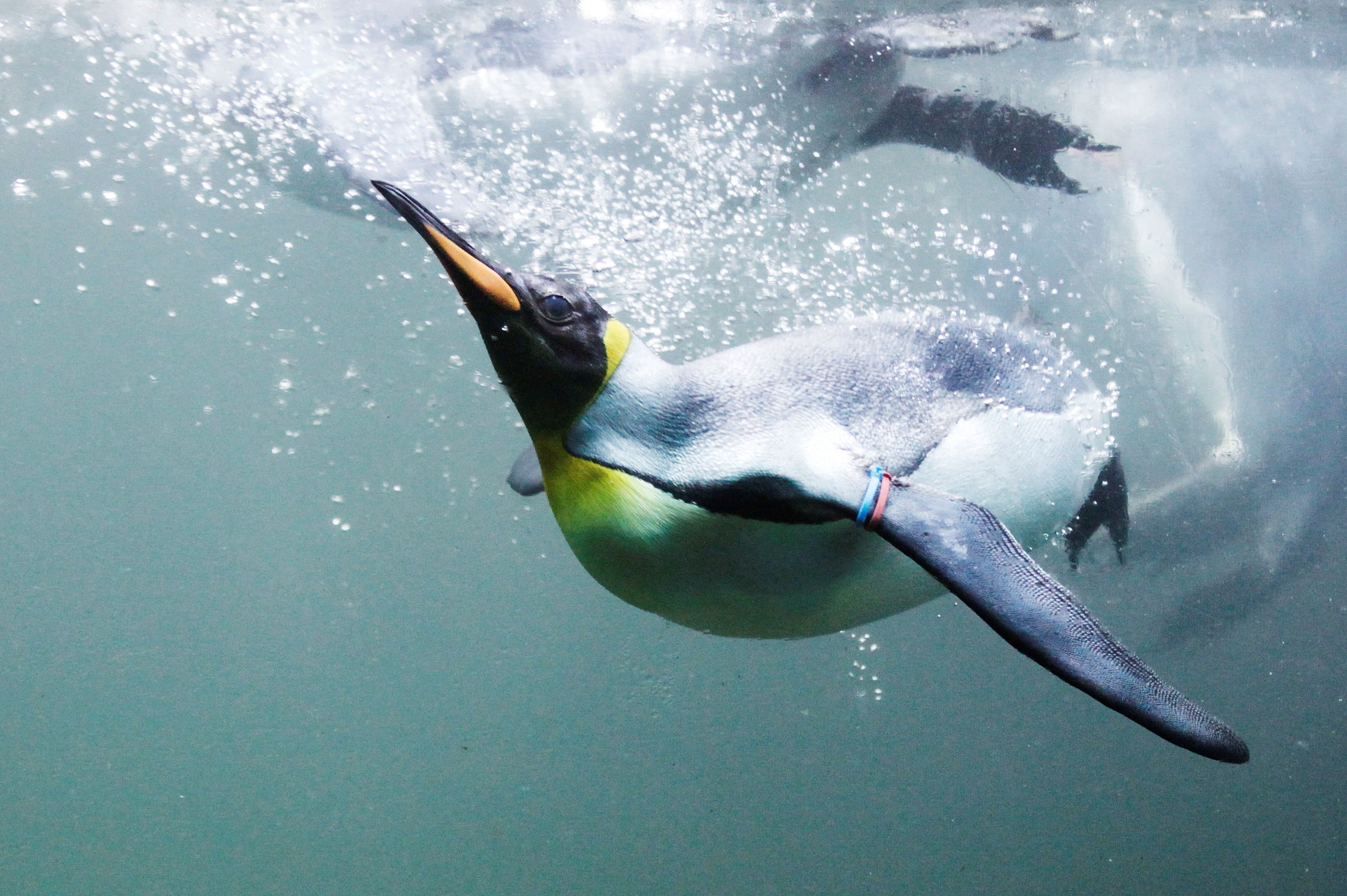Can Dinosaurs Swim? Uncovering the Aquatic Truths
Some dinosaurs were capable swimmers. Evidence suggests that certain species like Spinosaurus aegyptiacus thrived in aquatic environments.
The prehistoric world was home to diverse dinosaur species, many of which exhibited remarkable adaptations for survival. Among these ancient reptiles, certain dinosaurs showcased an unexpected skill—swimming. Fossil records and trackways provide intriguing clues that point toward aquatic lifestyles for some of these formidable creatures.
The discovery of specialized features in dinosaurs, such as webbed feet or streamlined bodies, further supports the idea that these giants were not limited to terrestrial habitats. As paleontologists continue to unearth and analyze new evidence, the understanding of dinosaur ecology, including their swimming abilities, becomes more refined, offering a glimpse into the complexities of life millions of years ago. Despite their massive size and seemingly ungainly shapes, these prehistoric behemoths conquered not only the land but also the ancient waters, showcasing the versatility and adaptability of life on Earth.

Credit: www.fossilguy.com
Exploring Dinosaur Lifestyles
Welcome to our journey into the prehistoric world of dinosaurs. These magnificent creatures ruled the Earth for over 160 million years. Yet, some questions remain a mystery. Did these enormous reptiles have the ability to swim? Let’s dive deep into the lifestyles of dinosaurs to uncover how they lived, adapted, and possibly swam.
Habitats And Adaptations
Dinosaurs thrived in a variety of environments. Each species adapted uniquely to its surroundings:
- Forest dwellers developed feet and legs suitable for land.
- Dinosaurs in arid areas had features to reduce water loss.
- Coastal species may have used water sources for defense or food.
Certain species adapted for aquatic life. Fossil evidence shows webbed feet and streamlined bodies in some specimens. These features suggest a swimming capability.
Land Giants Vs. Aquatic Marvels
Comparing land dinosaurs to their aquatic counterparts reveals fascinating contrasts:
| Land Giants | Aquatic Marvels |
|---|---|
| Heavy, robust legs for support | Fins or flippers for movement |
| Thick, long tails for balance | Streamlined bodies to reduce drag |
| Lungs adapted for air intake | May have held breath or processed oxygen differently |
Tyrannosaurus rex and Apatosaurus are examples of land giants.
Plesiosaurs and mosasaurs, although not dinosaurs, showcase aquatic lifeforms.
Understanding dinosaur lifestyles brings us closer to envisioning their daily activities. Excavations and studies are ongoing. They aim to further unravel these ancient swimming mysteries.

Credit: www.kcra.com
Debunking Dinosaur Myths
Imagine huge creatures roaming the Earth, millions of years ago. But, could these giant dinosaurs swim? Let’s splash into the prehistoric past and chase away the myths surrounding dinosaur swimming abilities!
Common MisconceptionsCommon Misconceptions
Dinosaurs, the land-giants, weren’t all afraid of water. Many people think dinosaurs stayed on land. Truth is, some loved a good swim. Here’s a quick look at common myths:
- Myth: All dinosaurs were land dwellers.
- Fact: Some had adaptations for water.
- Myth: Big dinos couldn’t float.
- Fact: Size doesn’t stop buoyancy.
- Myth: Dino-legs weren’t fit for swimming.
- Fact: Some had webbed feet, like ducks!
Paleontological Evidence
Now, let’s dive into the evidence from fossils:
| Dinosaur Type | Swimming Ability |
|---|---|
| Spinosaurus | Powerful tail for water propulsion |
| Sauropods | Could float, swim using feet to paddle |
Not only do we have fossils, but also footprint tracks in old seabeds. These big clues tell us many dinos swam across water.
Aquatic Behemoths: The Real Swimmers
Imagine creatures as massive as dinosaurs navigating through water! While renowned for their land-dwelling counterparts, the ancient world also hosted dinosaurs adapted to water. Let’s dive into the lives of these aquatic behemoths, the true swimmers of the prehistoric ages.
Identifying Aquatic Species
Not all dinosaurs were bound to the land. Some species were aquatic or semi-aquatic. These dinosaurs spent much of their time in the water.
- Spinosaurus – Likely a semi-aquatic hunter.
- Plesiosaurs – Long-necked marine reptiles.
- Mosasaurus – A giant, whale-like predator.
Anatomical Features For Swimming
Swimming dinosaurs showcased special anatomical adaptations. Let’s look at some features that enabled them to be efficient swimmers:
| Species | Features |
|---|---|
| Spinosaurus |
|
| Plesiosaurs |
|
| Mosasaurus |
|
Body shapes in aquatic dinosaurs varied greatly. Long, narrow bodies cut through water. Broad, flat tails provided propulsion. These dinosaurs were the rulers of their watery realms.
Research Methodologies And Findings
Welcome to the intriguing realm of paleontological detective work, where each fossil acts as a clue to unraveling the ancient past. Here, we explore the scientific techniques and latest findings that help answer a fascinating question: Could dinosaurs swim?
Fossil Analysis Techniques
Digging deep into the past requires innovation and precision, two hallmarks of modern fossil analysis. Scientists use a variety of methods to decode the secrets held within ancient remains. Let’s delve into some of these techniques.
- CT Scanning: High-resolution images reveal internal structures without damaging fossils.
- Sediment Analysis: Determines the environment in which the dinosaur lived and potentially swam.
- Isotope Testing: Offers clues about the climate and dinosaur diets, hinting at aquatic lifestyles.
Recent Discoveries And Studies
The latest research paints a vivid picture of how some dinosaurs might have interacted with water. Recent discoveries suggest a variety of water-based behaviors.
| Dinosaur | Discovery | Implication |
|---|---|---|
| Spinosaurus | Tail adapted for swimming. | Likely swam in rivers. |
| Sauropods | Footprint trails leading into water. | Possible wading or swimming behavior. |
| Theropods | Fossils found near ancient shorelines. | May have hunted in shallow waters. |
Each study adds a piece to the puzzle, suggesting that certain dinosaurs were adept for aquatic environments. This evidence brings us closer to understanding the diverse capabilities of these ancient creatures.
Impacts On Modern Science And Culture
The curiosity over dinosaurs and their abilities extends to swimming, too. Researchers study ancient fossils and track marks to understand if these giant reptiles could swim. This quest has unveiled surprising links between prehistoric times and today’s world. Science and culture intertwine as we uncover these ancient secrets.
Evolutionary Significance
Insights into dinosaur locomotion shed light on evolutionary pathways. Paleontologists scrutinize fossilized evidence to decode how dinosaurs might have swum. This information paints a clearer picture of their adaptations and survival mechanisms.
- Habitat versatility helped shape the ecosystems.
- Dino swim patterns reveal clues to body structure evolution.
- Modern reptiles are studied for comparative analysis.
Influencing Pop Culture
Dinosaurs captivate audiences in books, films, and art. Their potential swimming abilities fascinate and inspire creators. Stories and visuals spark imaginations and fuel dino-mania.
- Blockbuster movies feature swimming prehistoric beasts.
- Video games engage players with dinosaur swimming quests.
- Artists depict dinosaurs in aquatic settings for high interest.

Credit: www.reuters.com
Conclusion
Exploring the aquatic abilities of dinosaurs has uncovered fascinating insights. While not all were swimmers, evidence suggests certain species thrived in water. This dive into prehistoric times reveals the diversity and adaptability of these ancient giants. Remember, the story of dinosaurs is as deep and vast as the oceans some may have swum in.
Keep swimming through history’s mysteries for more intriguing revelations.




